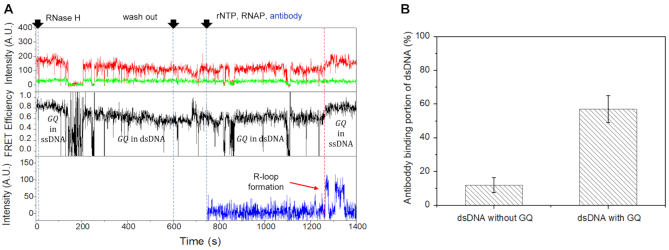Figure 5.
R-loop formation facilitated by GQ. (A) Representative time traces showing R-loop formation during transcription on dsDNA with GQ on the non-template strand: Cy3 (top, green) and Cy5 (top, red) fluorescence intensities at Cy3 excitation, the corresponding FRET (middle) and Alexa488 fluorescence intensity at Alexa488 excitation (bottom). It is noticeable that the FRET efficiency of GQ decreases after R-loop degradation by RNase H, and recovers the original value after R-loop formation. (B) The portion of dsDNA that exhibited antibody binding for 20 min after the start of the multiple-round transcription. The antibody binding (R-loop formation) probability significantly increases when dsDNA has GQ on the non-template strand.

